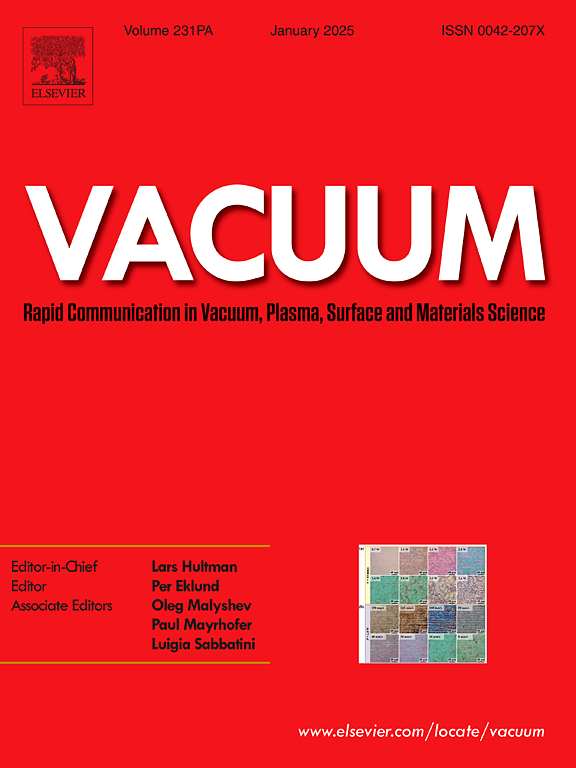冷原子真空测量磁阱系统的改进设计
IF 3.9
2区 材料科学
Q2 MATERIALS SCIENCE, MULTIDISCIPLINARY
引用次数: 0
摘要
基于磁阱冷原子损失率的真空测量技术有望在超高真空/超高真空中建立一个初级真空标准。然而,当前系统中安装的四极阱存在马约拉纳损耗,会影响冷原子真空测量的准确性。为了解决这一问题,我们设计了适合真空测量的三叶草疏水阀的最佳参数。该结构产生的磁场曲率为20 G/cm2,梯度为23.7 G/cm,最大温升为14.90℃。根据高温下的损失率方程计算了三叶草捕集器的马约拉纳损失率(kBT>2ћω)。此外,根据磁阱深度估计了磁阱中捕获的原子数。结果表明,在19 G偏置场下,由于Majorana损失引起的真空压力反演误差低至2.5 × 10−12 Pa。这表明马约拉纳的损失得到了显著抑制。磁阱能够捕获2.73× 106个原子,这个数字足以反转真空压力。本文章由计算机程序翻译,如有差异,请以英文原文为准。
Improved design of magnetic trap system for cold atomic vacuum measurements
The technique of measuring vacuum based on the loss rate of cold atoms in magnetic trap is expected to establish a primary vacuum standard in the ultra-high vacuum/extreme-high vacuum. However, there are Majorana losses in quadrupole trap installed in current systems that can affect the accuracy of cold atom vacuum measurements. To solve this problem, we design the optimal parameters of cloverleaf trap which is suitable for vacuum measurements. The structure was designed to produce a magnetic field with the curvature of 20 G/cm2, the gradient of 23.7 G/cm, and the maximum temperature rise was evaluated to be 14.90 °C. The Majorana loss rate in the cloverleaf trap was calculated based on the loss rate equation under high temperatures (kBT>2ћω). Additionally, the number of atoms trapped in magnetic trap was estimated based on the trap depth. The results demonstrate that, under bias field of 19 G, the error in vacuum pressure inversion due to Majorana losses is as low as 2.5 × 10−12 Pa. This indicates a significant suppression of Majorana losses. The magnetic trap is capable of trapping 2.73× 106 atoms, a number sufficient to invert the vacuum pressure.
求助全文
通过发布文献求助,成功后即可免费获取论文全文。
去求助
来源期刊

Vacuum
工程技术-材料科学:综合
CiteScore
6.80
自引率
17.50%
发文量
0
审稿时长
34 days
期刊介绍:
Vacuum is an international rapid publications journal with a focus on short communication. All papers are peer-reviewed, with the review process for short communication geared towards very fast turnaround times. The journal also published full research papers, thematic issues and selected papers from leading conferences.
A report in Vacuum should represent a major advance in an area that involves a controlled environment at pressures of one atmosphere or below.
The scope of the journal includes:
1. Vacuum; original developments in vacuum pumping and instrumentation, vacuum measurement, vacuum gas dynamics, gas-surface interactions, surface treatment for UHV applications and low outgassing, vacuum melting, sintering, and vacuum metrology. Technology and solutions for large-scale facilities (e.g., particle accelerators and fusion devices). New instrumentation ( e.g., detectors and electron microscopes).
2. Plasma science; advances in PVD, CVD, plasma-assisted CVD, ion sources, deposition processes and analysis.
3. Surface science; surface engineering, surface chemistry, surface analysis, crystal growth, ion-surface interactions and etching, nanometer-scale processing, surface modification.
4. Materials science; novel functional or structural materials. Metals, ceramics, and polymers. Experiments, simulations, and modelling for understanding structure-property relationships. Thin films and coatings. Nanostructures and ion implantation.
 求助内容:
求助内容: 应助结果提醒方式:
应助结果提醒方式:


